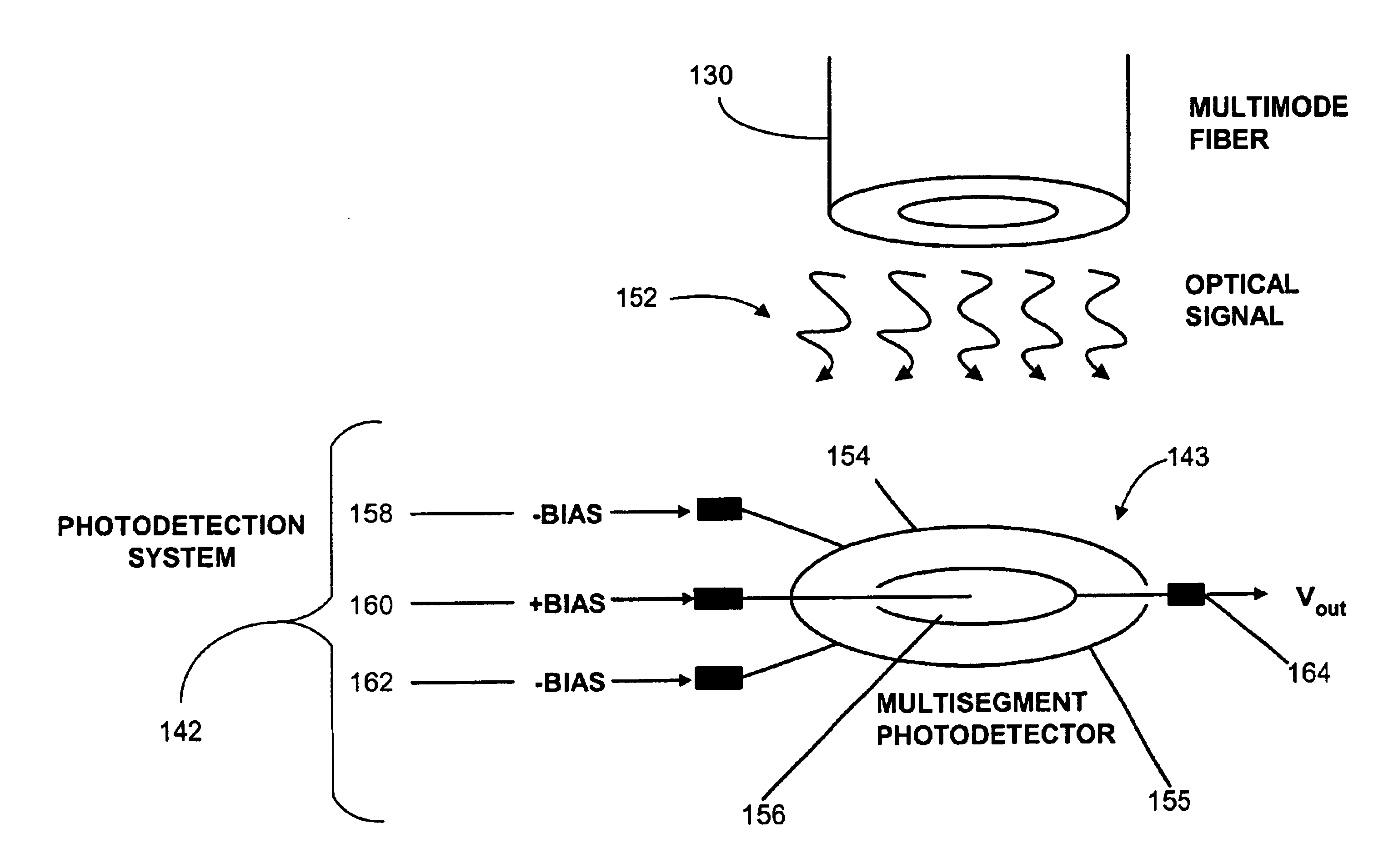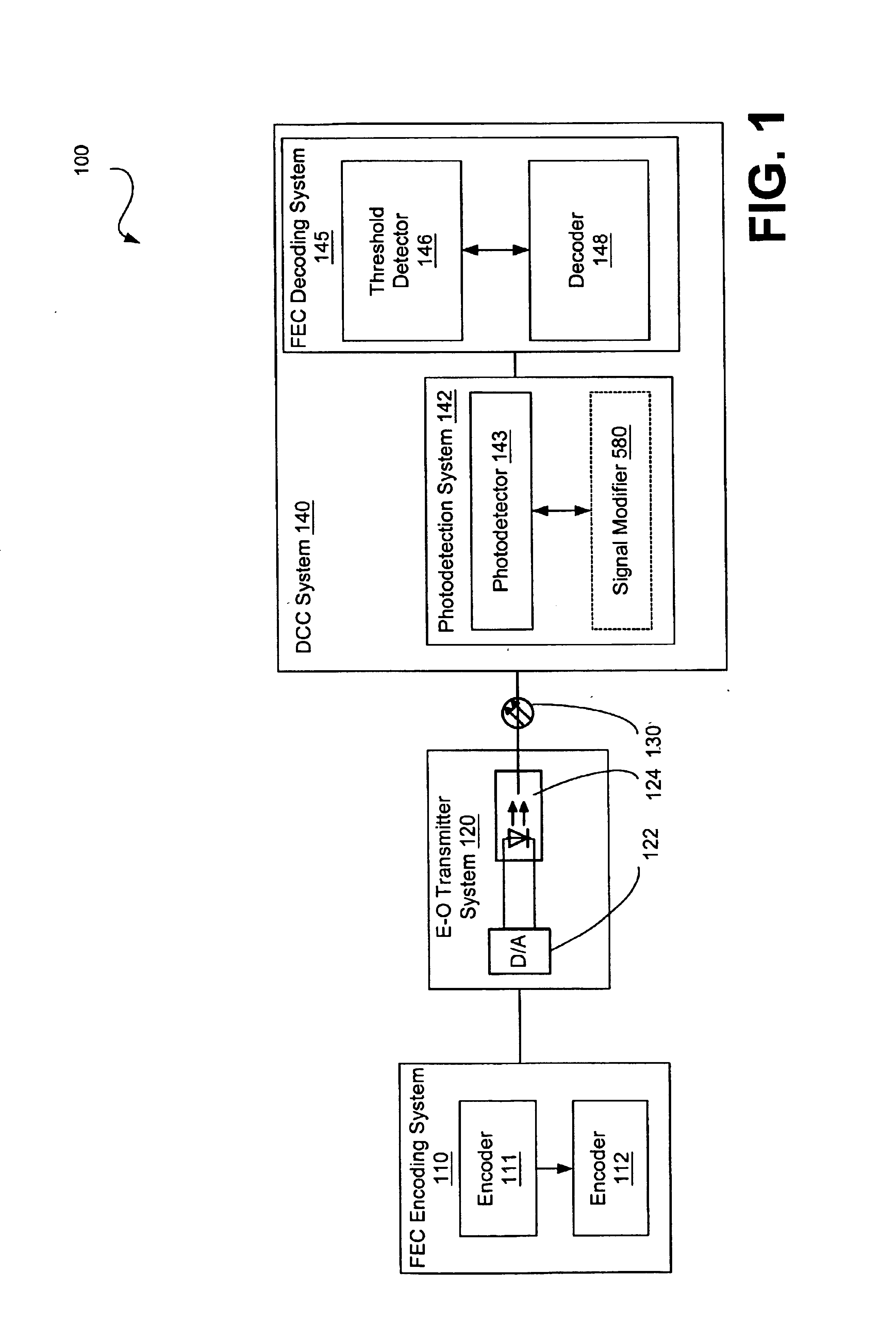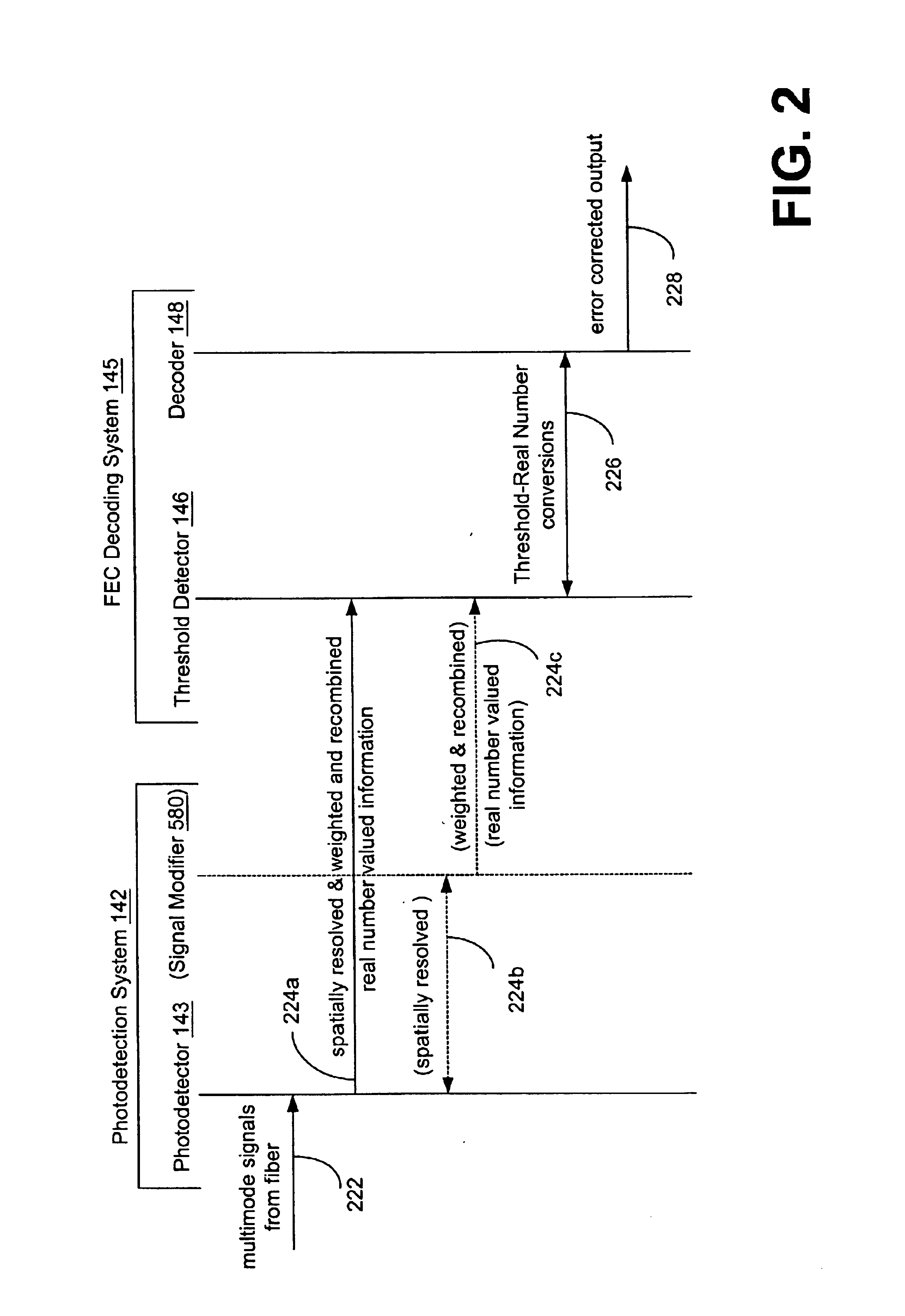Spatially resolved equalization and forward error correction for multimode fiber links
a multi-mode fiber and equalization technology, applied in multiplex communication, optical elements, instruments, etc., can solve the problems of reducing the maximum data transmission rate, limiting bandwidth-distance products of typical multi-mode fiber, and reducing the total transmission capacity of fiber. achieve the effect of reducing the effect of modal dispersion
- Summary
- Abstract
- Description
- Claims
- Application Information
AI Technical Summary
Benefits of technology
Problems solved by technology
Method used
Image
Examples
Embodiment Construction
The preferred embodiments of the invention now will be described more fully hereinafter with reference to the accompanying drawings. One way of understanding the preferred embodiments of the invention includes viewing them within the context of an optical fiber communication system, and more particularly within the context of a system that includes functionality for photodetection, modal dispersion compensation, and / or error correction of a signal carrying information that is transferred over a multimode optical fiber communication system. This system, herein referred to as the detection-compensation-correction (DCC) system, preferably implements spatial resolution and equalization for detection and compensation of modal dispersion. The spatial properties of each mode (e.g., channels) delivered over the multimode fiber of the optical fiber communication system results in a spatial diversity of the temporal response within the emitted optical spot.
In one embodiment, a multisegmented ...
PUM
 Login to View More
Login to View More Abstract
Description
Claims
Application Information
 Login to View More
Login to View More - R&D
- Intellectual Property
- Life Sciences
- Materials
- Tech Scout
- Unparalleled Data Quality
- Higher Quality Content
- 60% Fewer Hallucinations
Browse by: Latest US Patents, China's latest patents, Technical Efficacy Thesaurus, Application Domain, Technology Topic, Popular Technical Reports.
© 2025 PatSnap. All rights reserved.Legal|Privacy policy|Modern Slavery Act Transparency Statement|Sitemap|About US| Contact US: help@patsnap.com



